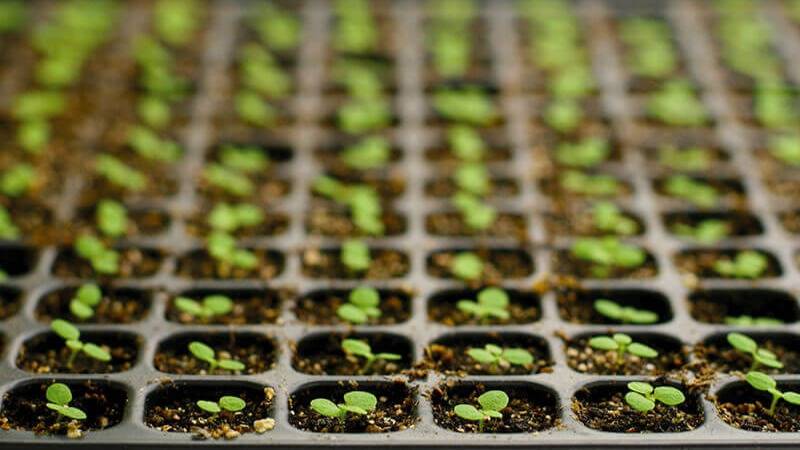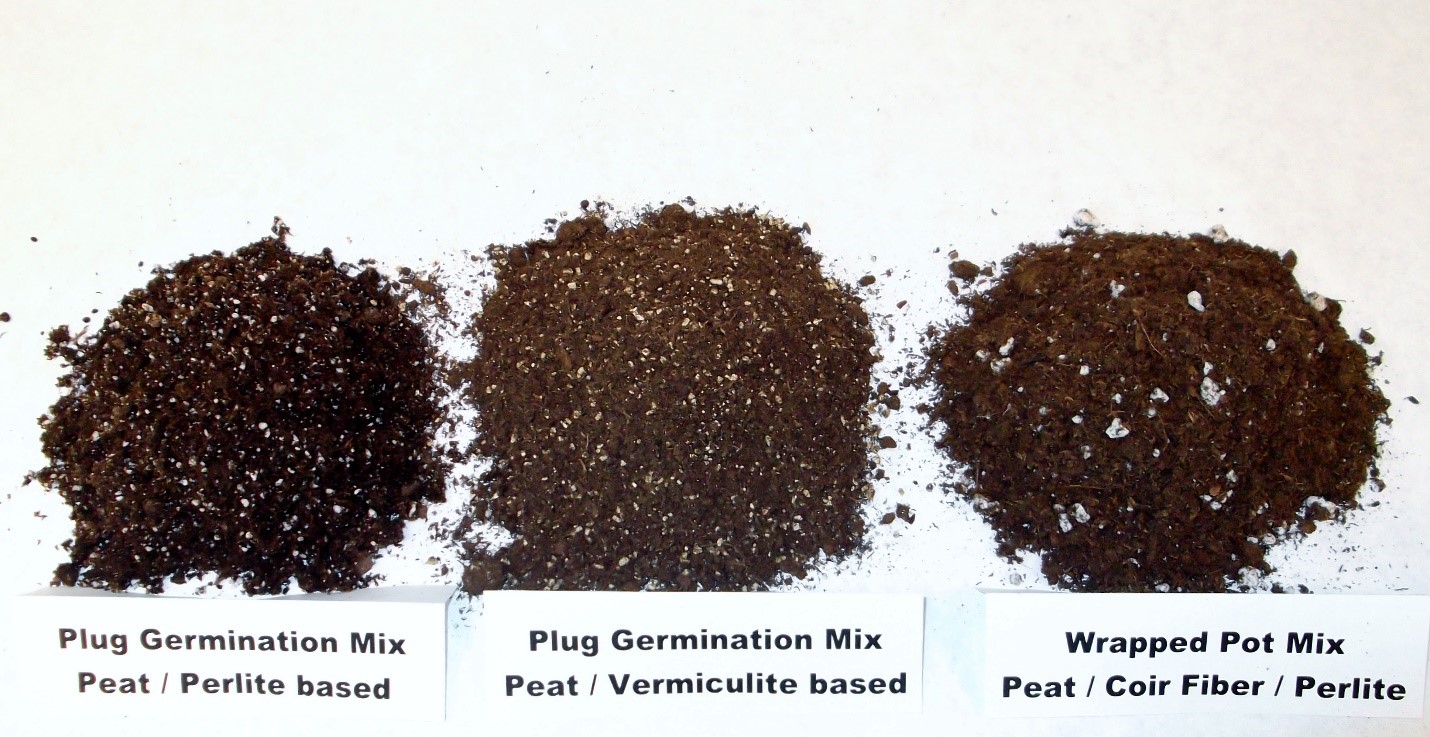Nutrition Tips for Seed Germination and Young Plants


Seed germination and young plant production start with the right growing medium or substrate. It is important to have a substrate with good physical characteristics, such as air porosity and water-holding capacity, however, chemical characteristics are equally important. Correct starting pH, electrical conductivity and nutrient content are necessary for favorable young plant development. Once seeds are sown or cuttings are stuck, the grower must monitor pH and nutrient status. Here are some tips to make the proper cultural adjustments during the crop cycle to achieve success.
Keep in mind that germinating seeds and rooting cuttings in plug trays is high-density production, meaning that the developing root system is limited to a very small amount of growing medium. Therefore, nutrient status and pH can change very easily from irrigation and fertilizer applications. Knowing this, the benefit is that you can make cultural adjustments quickly and easily. However, it is also easy to get in trouble, so attention to detail is very important for small cell culture. Larger cell plug trays and taller trays are more forgiving, since they hold more substrate and therefore, require less frequent application of irrigation water/fertilizer solution.

Fertilization Requirements of Seedlings
Seedlings do not need fertilizer from sowing through the first week after germination because the cotyledons, which are pre-formed inside the seed, have all the initial nutrition needed to sustain seedling growth. A week after germination, seedlings require a small amount of nutrients, mainly N, P and K.
Remember, seedlings and plants will not grow faster or better by applying higher than recommended rates of fertilizer; in fact, over-fertilizing can result in a negative impact on growth (plants become stretched or distorted), algae formation on the growing medium surface which attracts shore flies and fungus gnats and build-up of fertilizer salts which can burn roots and kill seedlings. Young seedlings are particularly sensitive to high fertilizer/salt levels in the substrate, so the Electrical Conductivity (EC) should be monitored and maintained below 1.5 dS/m (mmhos/cm) using the 2:1 growing medium test method.
Seed germination substrates, like PRO-MIX® FPX AGTIV® DEFEND™, contain a mild starter fertilizer charge to fulfill the initial nutrient requirements of seedlings up to the formation of the first set of true leaves.
Fertility Program
Keep in mind that there is no perfect fertilizer or nutrient solution for all plants. Plant nutrient needs depend on the plant species, stage of plant development, season of the year and environmental conditions. Water quality must also be considered since dissolved minerals and water alkalinity have an impact on fertilizer selection. Many fertilizer companies offer calcium-magnesium (cal-mag) formulations for seedlings and young plants that work well since these formulations provide higher amounts of calcium, magnesium and micronutrients than standard fertilizer formulations when feeding at low nitrogen rates.

Depending on your water quality, it may be best to alternate with a potentially acid fertilizer, since many of the cal-mag fertilizers tend to raise growing media pH. Apply fertilizer as a constant feed, with every fourth irrigation with clear water. Fertilizer application rates can start with 50 ppm N, and then increase to 100 ppm N just before transplant. After transplant, N can be maintained at 100 ppm or increased to 150-200 ppm N depending on the plant species. Adjust application rate based on plant response and the amount of sunlight.
Benefits of Active ingredients
PRO-MIX® FPX AGTIV® DEFEND™ contains Bacillus, a beneficial bacterium that suppresses damping-off and the root rot pathogens Fusarium, Pythium and Rhizoctonia. It works by reducing root disease symptoms by one or a combination of mechanisms to provide a competitive advantage over the pathogen. Bacillus does this by a combination of direct destruction of the pathogen, a reduction of the spread of the pathogen and/or pathogen exclusion from the site of infection at the plant root. When the plant’s root system comes into contact with Bacillus, the bacterial spores germinate and begin to colonize the plant’s roots within 48 hours. The bacteria grow around the root system to form a protective shield that serves as a physical barrier to certain root rot pathogens. Disease suppression occurs with all crops including vegetables, ornamental greenhouse plants, perennials and nursery crops. PRO-MIX products with AGTIV technologies protect your plants and reduce the incidence of root diseases.